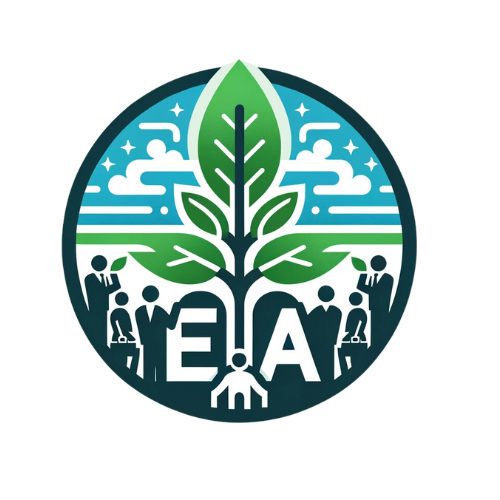Meet & Confer Committee
Primer On The EA Meet & Confer Team And The Bargaining Collective Bargaining Process
What is meet and confer? It is a commonly used term among union members. This article will try to succinctly describe the bargaining process and how the EA meet and confer team operates. The bargaining process is an ongoing process. It is a year-round process. It doesn’t occur only during contract negotiations. For instance, the EA recently completed negotiations for new job classification called “Staff Specialist” to resolve a grievance relating to Air Quality Specialists working out of class, as well as several Administrative Analysts in the same department also clearly working out of class. The negotiation of the new Staff Specialist classification resulted in the resolution of the grievance by properly classifying bargaining unit members performing specific types of duties. The newly negotiated class spec also provides staff who were in ostensibly in dead-end positions more upward mobility.
The EA is continuously engaged in collective bargaining with Air District representatives regarding one thing or another. Bargaining of certain items requires that both sides negotiate in good faith. This process is subject to “meet and confer” standards -- the mutual obligation for both the EA and the Air District to negotiate face-to-face promptly upon request by either party for a reasonable period of time in order to exchange freely information, opinions, and proposals, and, to endeavor to reach an agreement. On the other hand, the bargaining of other items is less prescriptive, less formal and with no obligation to reach agreement. This process is sometimes referred to as “meet and consult”.
The EA’s meet and confer team is comprised of bargaining unit members who volunteer their time. The EA’s Constitution and By-Laws require that the meet and confer team include one bargaining unit member from each major employment classification. However, this isn’t always possible because, at any given point in time, not every classification has someone willing to volunteer to participate on the team. Thus, the team is sometimes comprised of multiple negotiators from one bargaining unit class and none from another class. For instance, one year, there were no volunteers from the clerical staff.
Most union employees are aware that every couple of years the EA goes through a 4 to 6 month process to negotiate a new collective bargaining agreement, otherwise known as the Memorandum of Understanding (MOU). The big-ticket items on everyone’s mind during such negotiations include cost of living and medical benefits. What some EA members don’t realize is that, multiple items, usually items subject to the MOU, are negotiated at any given point in time throughout the year. Modifications to the MOU culminate in a side letter upon final approval. During non-contract negotiations, neither side can demand the other to negotiate MOU items. Nevertheless, from time-to-time, situations arise during the middle of the contract that make it beneficial for both sides to amend an MOU provision. That is the case with the creation of the Staff Specialist positon. Side letters to the MOU require agreement from both EA membership and the Air District’s Board of Directors.
There are four subjects the EA can insist on bargaining either during contract negotiations or mid-contract if problems, i.e. grievances, should arise during the middle of the collective bargaining agreement. They include:
1) Terms and conditions of employment;
2) hours and wages;
3) the elements of each job; and
4) safety issues.
These bargainable items are commonly known as “matters within the scope” as defined by a California Government Code adopted in the late 1960’s called the Meyers-Milias-Brown Act (MMBA). This statute was established to promote full communication between public employers and their employees by providing a reasonable method of resolving disputes between public employers and public employee organizations. MMBA strengthens employer-employee relations through the establishment of uniform and orderly methods of communication between employees and the public agencies by which they are employed.
So what are the responsibilities of the EA’s meet and confer members? Typically, there are eight or more team members with varying degrees of experience with public sector labor relations and/or collective bargaining experience. The most experienced member on the current team has over 20 years of experience with both collective bargaining and labor relations. Team members, some of whom are EA Board Officers, have the following responsibilities:
1. Keep a pulse on what is going on in various Air District departments, to know what the important issues for bargaining unit employees they specifically represent within their own job classifications, to keep communications open with their constituents.
2. Take on assignments relating to specific bargaining subject matters. For instance, when the MOU is negotiated, different individuals on the team will be assigned different provisions within the contract such as medical benefits, the grievance procedure, the hiring procedure and so on.
3. Research topics such as wages and other compensation provided to employees in similar job specifications at other public agencies, research relevant case law such as recent ruling by the California PERB Agency, the state entity that enforces MMBA requirements.
4. Meet and confer team members must also know how to negotiate elements of a collective bargaining agreement. The Air District uses a very experienced consultant as their primary and virtually their sole negotiator. The EA uses a team captain to do most of the speaking at the table while other members will more than enough experience will chime in as necessary.
The meet and confer team reports to the EA Board of Directors. It provides the EA Board with background information on all items subject to bargaining and provides options to the EA Board. At times, the EA’s attorney is consulted on more complicated and/or subtle bargaining issues.
Currently, the meet and confer team is gearing up for negotiations for a new collective bargaining agreement which should commence in a month or two depending on how many MOU provisions both sides agree to tackle. Stay tuned!

